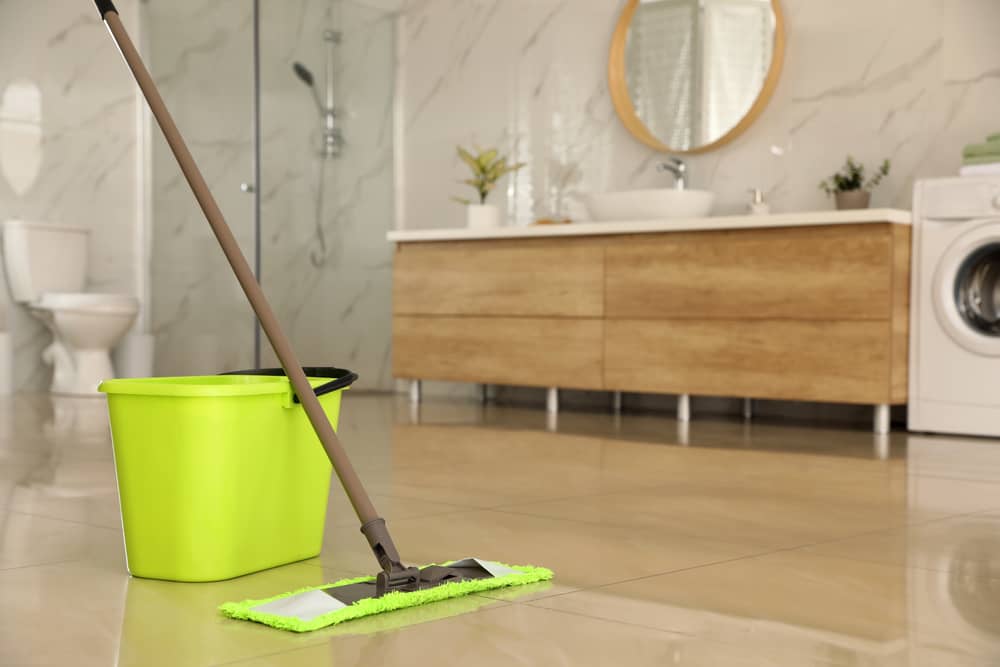Tile is a highly versatile covering, usually used for tile floors or walls. However, since many of us install tiles in high-traffic or high-use areas, that leads to dirty surfaces.
And no matter how much you’ve tidied the rest of the room, if your tile flooring or walls are dirty – well, the whole space is affected.
Tiles can last you years, if you maintain them properly.
How to clean tiles? It depends on the material! Here’s a quick rundown of the cleaning solution you’ll need for your tile:
- Ceramic or porcelain tiles: Multi-purpose cleaner, soapy water, or white vinegar
- “Resilient” tiles: Soapy water or specific cleaning products
- Terracotta tiles: Soap and water, non-acidic cleaners
- Natural stone tiles: Non-acidic cleaners or mild detergent (pH neutral)
- Dirty grout lines: Baking soda, hydrogen peroxide, vinegar, and/or water
Clean tile means a healthier environment inside and outside your home. No matter what type of tile you need to clean – we’ve got you covered!
Before Cleaning | Ceramic or Porcelain | Resilient | Terracotta | Concrete Pavers | Glass | Natural Stone | Cleaning Grout Lines | Cleaning Tiles in Different Areas
Why Clean Tiles?
Everything in your home gets dirty – from your floors to your ceilings.
A tile floor in particular picks up a lot of dust and debris from foot traffic, or from environmental factors for outdoor tiles. In your kitchen, there could be spills and messes that affect the floor tiles and grout.
When cleaning your bathroom, pay extra attention to tiles and grout. They’re regularly exposed to moisture, limescale, and soapy residue, which build up over time.
How Often to Clean Tiles?
Once or twice a week: Sweep or vacuum, routine cleaning
Every week: Deep clean bathroom tile
Every two weeks: Deep clean kitchen tile
Can’t keep up with this schedule? There’s a professional house cleaning service near you that can help!
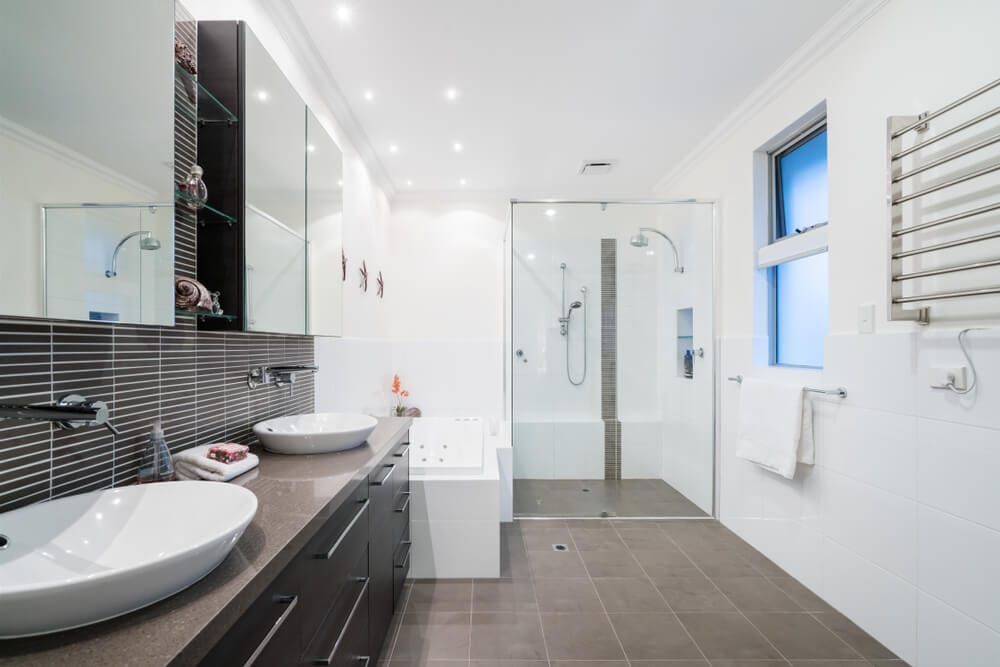
Before Cleaning Tiles
Avoid using sponge mops, which are less absorbent than microfibre or chamois-type mops. A sponge mop tends to push water around instead of absorbing it, which could make your tile grout dirtier.
Don’t use abrasive cleaners and tools (like a metal brush), since these could damage the tile’s surface or grout. When sweeping, use a soft-bristled broom.
Only use the correct cleaning solution for the material. Applying incorrect products to tile could result in short and long-term damage, such as discolouration or degradation.
Choose a great tile cleaner to make cleaning easier and more efficient!
And of course, always sweep or vacuum before cleaning floor tiles.
Use an efficient vacuum cleaner for tile floors to remove dust and debris. This will prevent grit from scratching and dulling surfaces and prevent dirty water from staining grout.
How to Clean Tiles
Most household tiles are made of ceramic, porcelain, and other durable materials that require less maintenance. Unlike stone tiling, these don’t need special cleaning methods since they’re not as sensitive to acidic products.
Here are the best and easiest ways to clean tiles.
How to clean ceramic or porcelain tiles
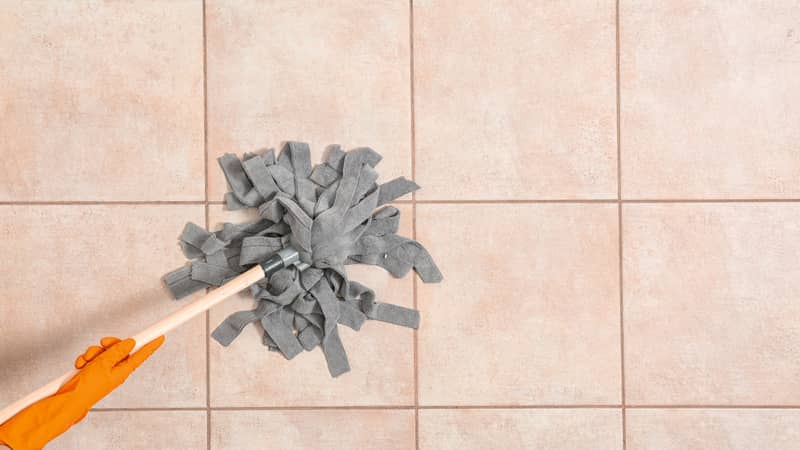
Ceramic tiles and porcelain tiles are made of kiln-fired clay, and are both durable and moisture-resistant. They’re also very easy to maintain!
There are several cleaning solutions for ceramic and porcelain tiles. Some simple ones include:
- 1/2 cup of white vinegar per litre of water (dish soap optional)
- 1/4 cup of mild detergent in 3 litres of water
- 1/2 cup of multi-purpose cleaner in 3 litres of water
Dip a mop into the mixture and wring out the excess water. Use gentle, even strokes that go back and forth to clean tile floors. Work from the corner furthest from the exit.
For a wall, use a microfibre cloth to apply the solution to the tile. Work from top to bottom.
Change out your cleaning solution once it becomes cloudy or dirty. Keep a bucket of clean water on hand to rinse your mop or cloth in.
If there’s a haze on your tile, mix some vinegar and hot water then wipe the surface.
Dry with a clean cloth or a new mop.
How to clean resilient tiles
“Resilient” tiles refer to linoleum tile, vinyl tile, and even cork tile. These are any material that is non-textile, non-wood, and non-stone.
They’re called resilient since they can be stretched or compressed but will return to their original shape.
The tiles are very low-maintenance, easy to clean, and often waterproof.
Vinyl tile: When it comes to vinyl tile floors or walls, you can use a simple mixture of vinegar and water. For stubborn dirt or scuff marks, dip a cloth in rubbing alcohol or baking soda.
Linoleum tile: Linoleum floors or walls are less tolerant of moisture, so try not to get these too wet. You can wash linoleum with borax (or a borax detergent) and water. Apply a wax coat every 3–6 months.
Cork tile: Cork has two finishes: polyurethane sealed (most common) and unfinished. For sealed cork, wash it with water and mild soap or vinegar. Unfinished cork will need specific cleaning methods for polyurethane.
NOTE: Do not use a steam mop. This will cause the material to warp due to the heat and hot water.
How to clean terracotta tile
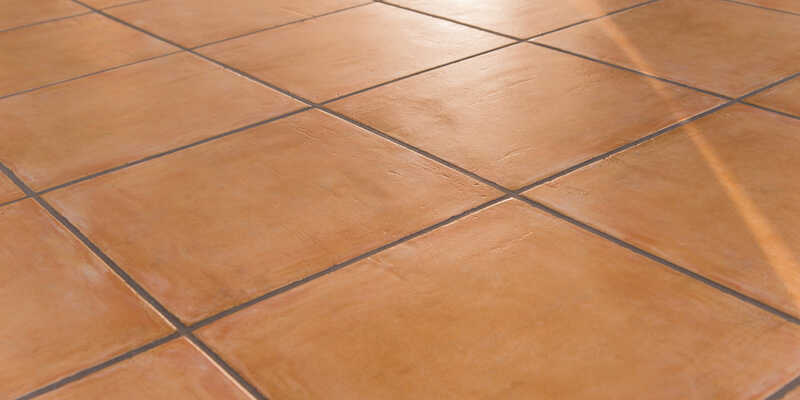
Terracotta is also made of kiln-fired clay, making it similar to ceramic tile. However, it is fired at a lower temperature and does not have glazing, so it’s more porous.
To clean terracotta tile, use a damp mop with soapy water. Do not use anything acidic such as ammonia or vinegar, and avoid wire brushes.
Clean stains with oxalic acid and water. Rinse with a cloth afterwards.
Quarry tile is an engineered form of terracotta, formed from a mixture of natural clay and pulverised stone. You can also clean it with soapy water and then rinse.
How to clean concrete pavers
Cement-based concrete pavers are growing in popularity since they’re affordable and customisable.
Clean concrete tiles by moistening the surface, then mopping or scrubbing with a solution of water and non-acidic cleaners. Use a nylon brush.
There are specialised concrete cleaners that you can opt for instead. Make sure to avoid anything with bleach or acid.
How to clean glass tiles
Glass is becoming an increasingly common tile material in bathrooms and kitchens. The tiles are resistant to stains and moisture, and can be coloured or styled in a variety of ways. They’re also easy to clean!
No need to buy a commercial glass cleaner for your tiles. Just mix up 1/4 cup vinegar in 1 cup water, with a few drops of detergent in a spray bottle.
Spray the cleaner over your glass tiles and let it sit on the surface for 10–15 minutes. Wipe away with a microfibre cloth, making sure to buff in one direction to prevent streaks.
How to Clean Natural Stone Tiles
Tiles made from natural stone require a more delicate touch. Traditional cleaners tend to contain harsh chemicals that are detrimental to stone.
Use a more pH-neutral cleaner or products specifically for stone materials.
Never use a steam mop to clean natural stone.
How to clean marble tiles
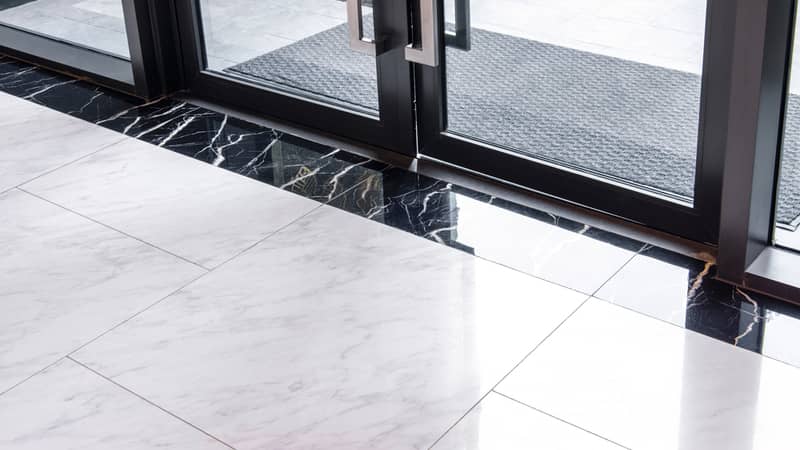
Marble tile is high maintenance, although it’s very beautiful. Don’t use anything acidic, such as fresh lemon juice or vinegar.
To clean marble tile, simply wipe it with fresh water and a microfibre cloth. You can add some mild soap or baking soda to deal with stains or stubborn dirt. Tin oxide also removes stains.
Dry with a clean cloth.
Seal your marble tiles once a year.
How to clean slate tiles
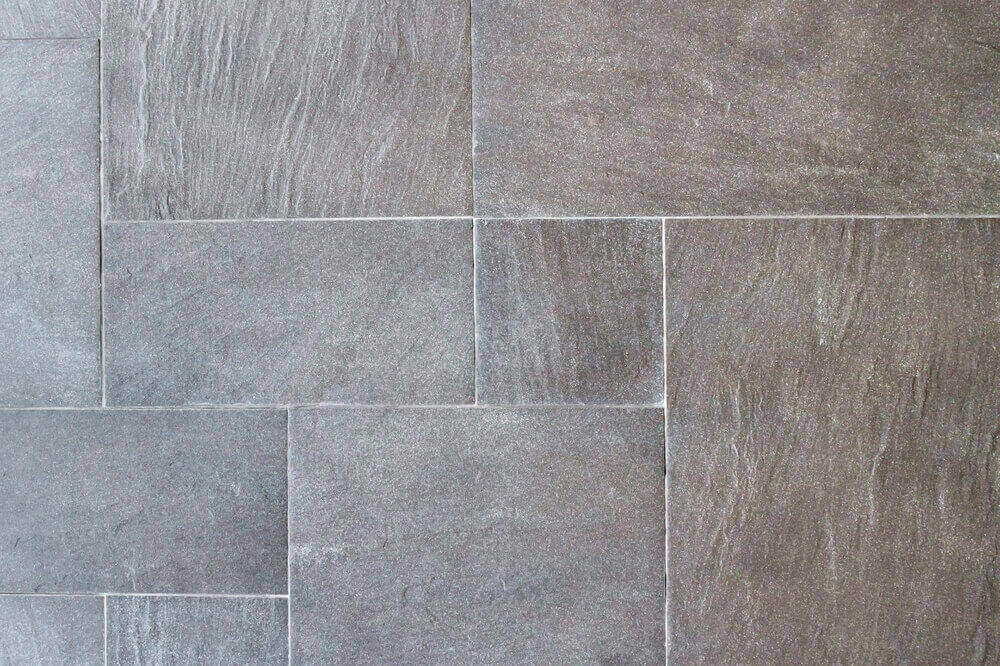
For cleaning slate tile, you can use water and mild detergent, plus a soft mop or microfibre cloth.
Dry immediately with a soft cloth to prevent water spots.
How to clean travertine tiles
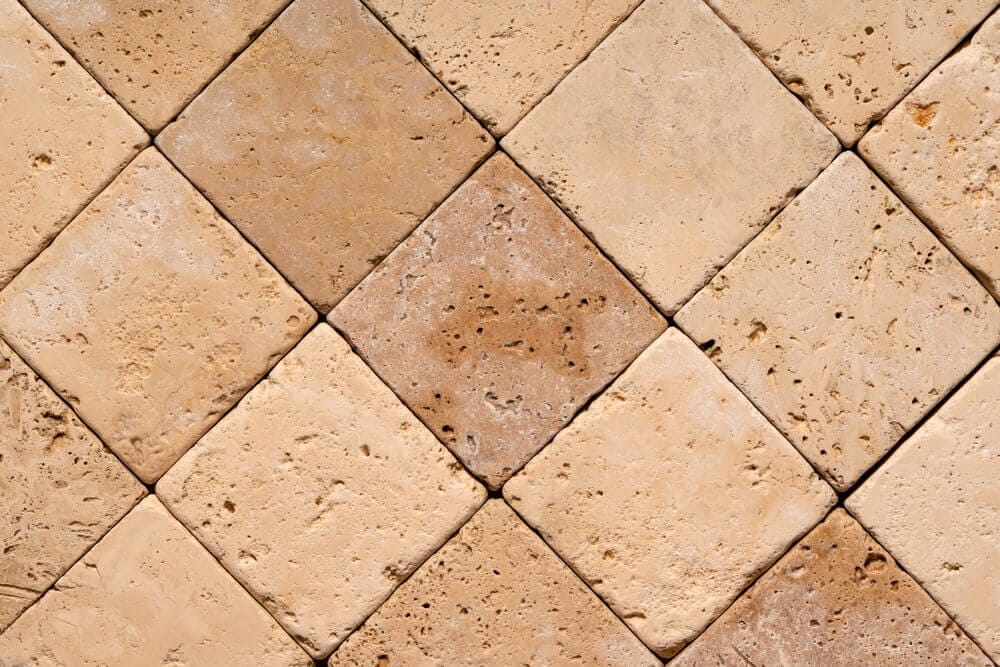
Travertine is a type of limestone, which makes it more porous than normal.
To clean travertine tiles, dip a mop or cloth in warm water then wring it almost dry. You can add a non-acidic soap for disinfection.
Mop the floor or wipe the wall with the solution, taking care not to saturate the tiles. Then go over the floor with clean water to remove any residue.
Use a below-surface sealer and a surface barrier sealer to prevent discolouration of your travertine.
How to clean granite tile
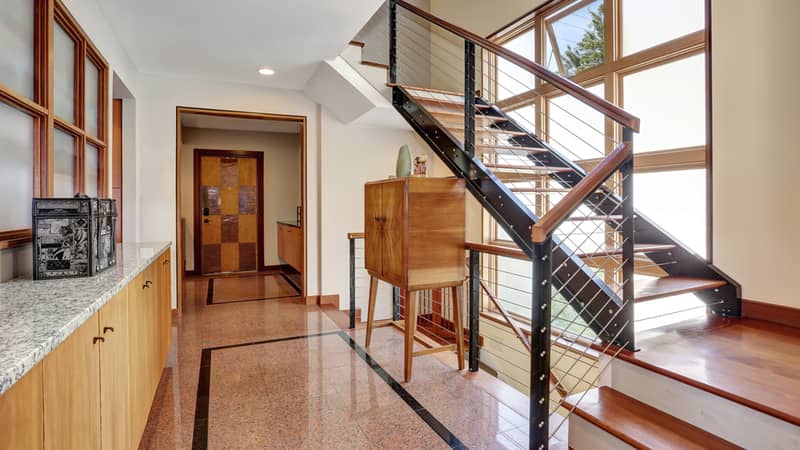
Again, use a pH-neutral cleaning product to clean granite tile. There are solutions specific for granite, and more so for grout between stone tiles.
Make sure to dry off any excess water immediately.
You can use a resin sealant to maintain the stone’s appearance.
Cleaning Grout Lines
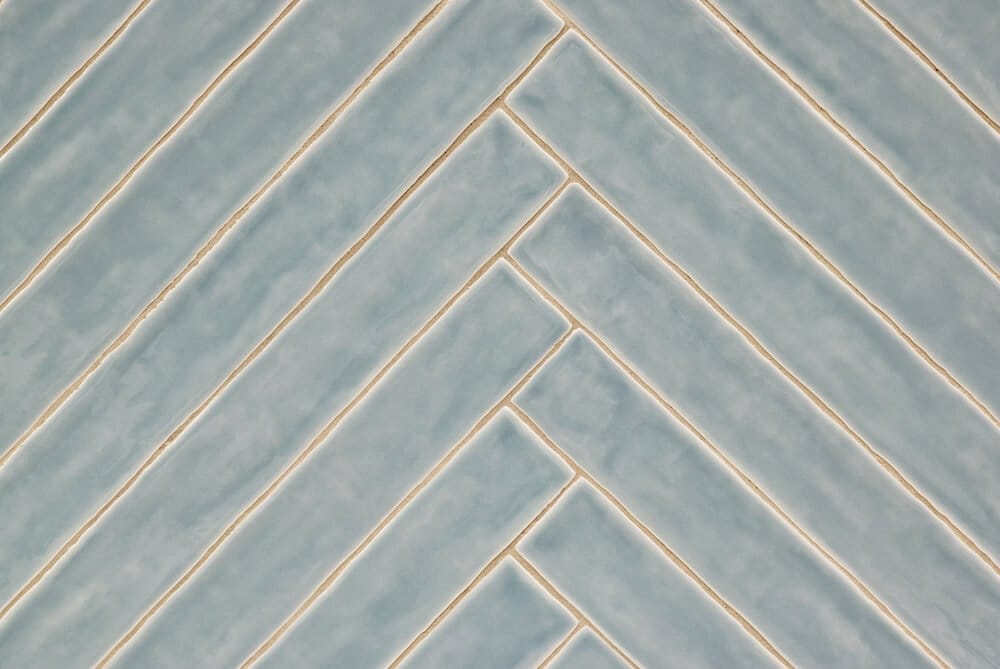
Here’s a secret – if you want pristine tile floors or walls, you’ll need to keep the grout clean!
Traditional grout in houses is cement-based, which is porous and not waterproof. This means that grout absorbs grease, water, and other substances. It’s also prone to mould or mildew.
No need for commercial products, though! There are plenty of homemade grout cleaners that you can make with stuff right in your kitchen or medicine cabinet.
You can even clean grout without scrubbing.
The simplest ways to clean tile grout include:
- Combining two parts baking soda with one part hydrogen peroxide, and applying the paste to the grout.
- Mixing a dish soap and vinegar solution in a spray bottle, then wetting the grout.
- Adding a squirt of lemon juice to cream of tartar and scrubbing it onto grout stains.
- For stone grout, apply a paste of baking soda and water, and lightly scrub before rinsing.
You can also use a steam cleaner or steam mop to get a really deep clean.
However, only employ this tool on sealed grout. A steam cleaner heats water then blasts steam onto the surface, which could seep into the grout and damage it.
It could also worsen already-broken grout or cause discolouration.
Cleaning Tiles in Different Places
You can have tiles installed in any part of your home, but the most common areas include the bathroom, kitchen, and outdoors.
Here are some tips for maintaining and cleaning tile in these spaces.
How to clean bathroom tiles
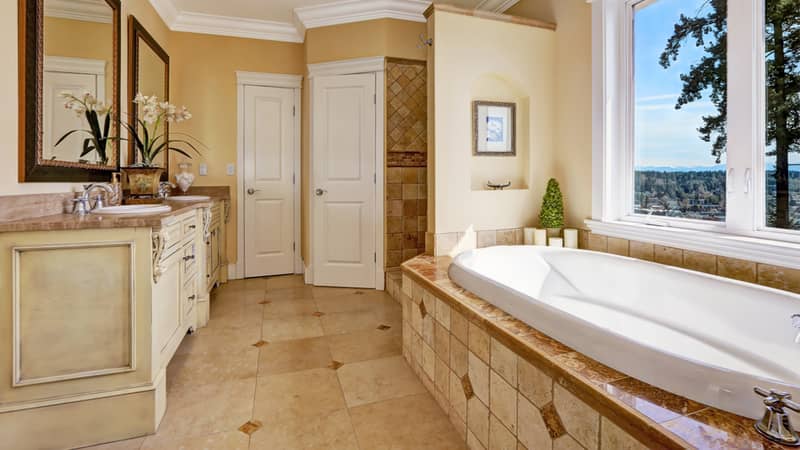
Bathrooms are very humid spaces, so there’s a lot of risk to tiles and grout in the room.
Wet clean your bathroom once a week to maintain sanitary conditions.
Check bathroom grout regularly for signs of mould, mildew, and general wear and tear.
You can keep a spray bottle of water and vinegar solution to apply daily. That’ll help cut down soap scum and limescale accumulation.
Keep your bathroom well-ventilated so the tiles can dry thoroughly.
How to clean kitchen tiles
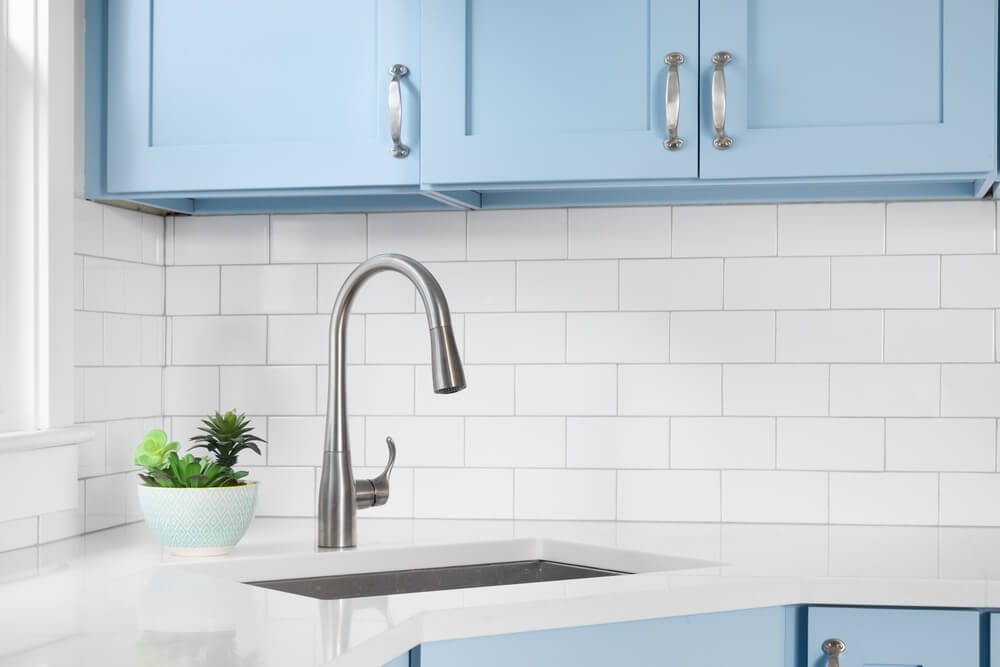
Kitchen tile floors are often exposed to many sources of dirt and grime, including food debris and liquid spills.
Your floors and walls can take a bit of mess, but they’ll need regular cleaning!
Vacuum or sweep the floor daily to prevent any build-up.
Tackle spills and stains immediately. Mop up liquids and pick up food, then use a paste of baking soda, salt, and water to clean tile floors.
How to clean outdoor tiles
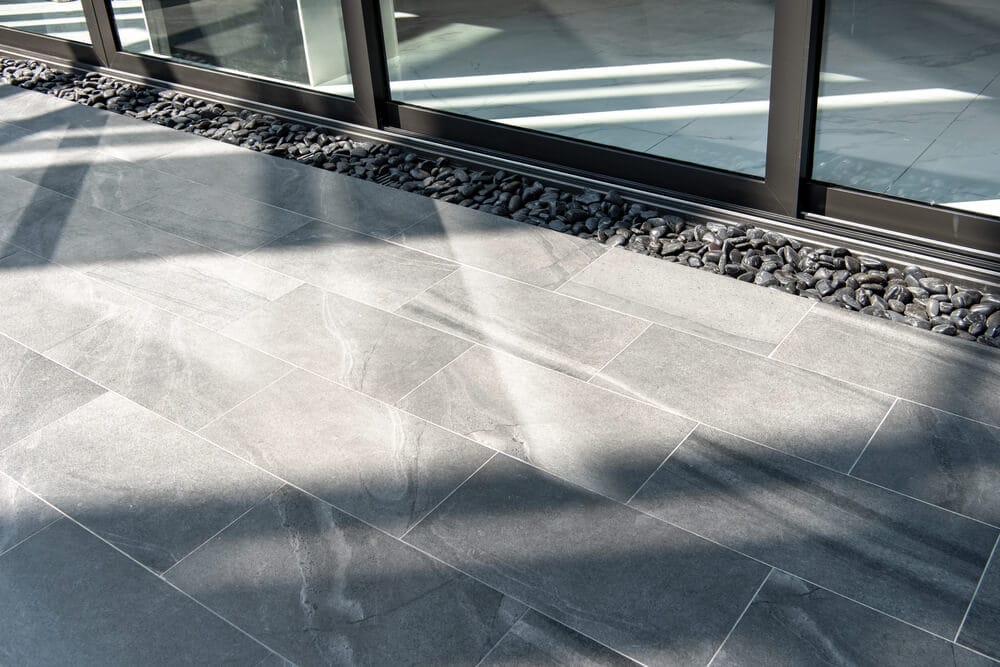
Start by sweeping away any leaves, twigs, and other debris. Then hose down the tiling, or use a mop.
Apply the appropriate cleaner for the material of your outdoor tiles.
If needed, take a hard-bristled scrub brush to remove organic matter such as mud.
Rinse the tiles with water, then let them air dry completely.
How to Maintain Tile Floors and Other Tile Surfaces
Minimise the loose dirt and debris on tile floors so you don’t have to work as hard to clean them.
Place door mats at entrances so family, friends, and visitors can wipe off their shoes. Alternatively, use house slippers so you don’t bring in outside dirt.
Keep some spares for your tiles in case any of them crack. It’ll save you from having to hunt down a tile for replacement.
You can use a bleach solution to clean grout, although always wear protective equipment! Never mix bleach with anything but water, and avoid using it for tile flooring.
Keep in mind that you can’t clean all tile floors and walls in the same way. Different materials need different methods, so knowing how to clean tiles of each type will allow you to be efficient.
Now go and enjoy your nice, shiny floors and walls… until you need to clean them again!

